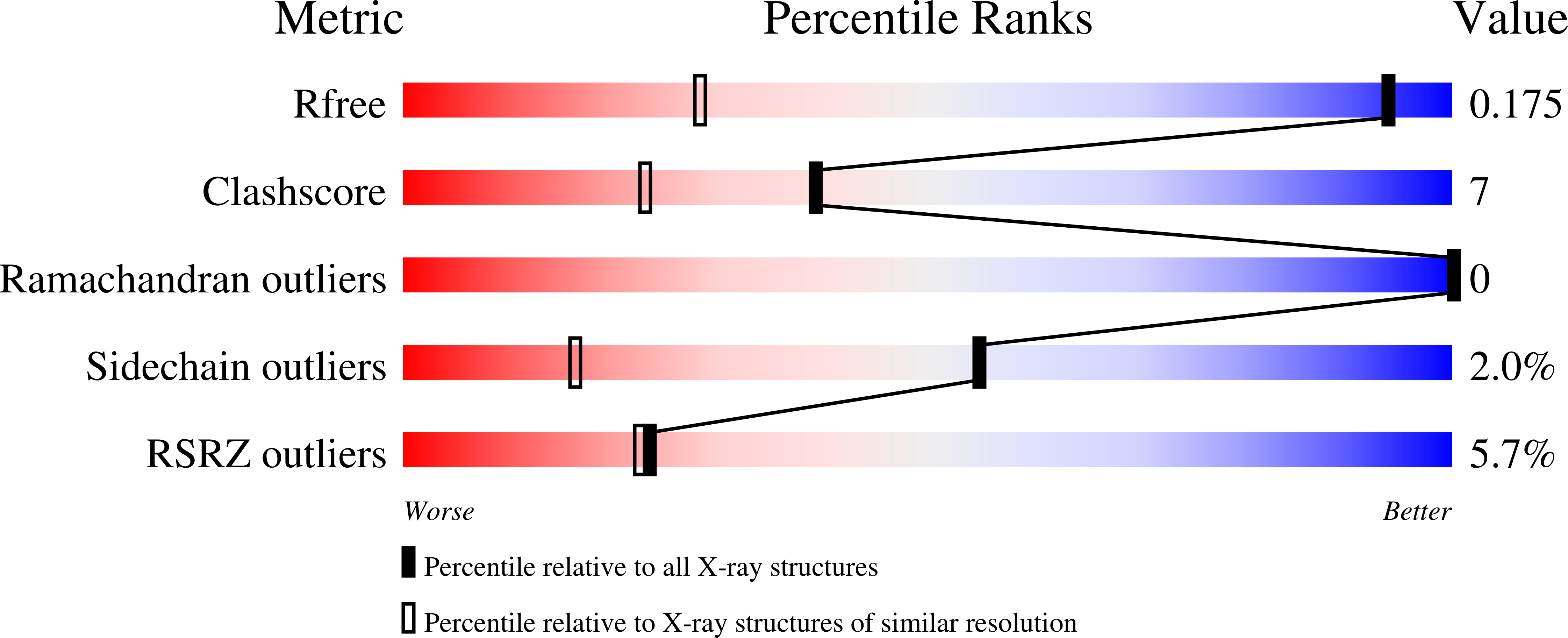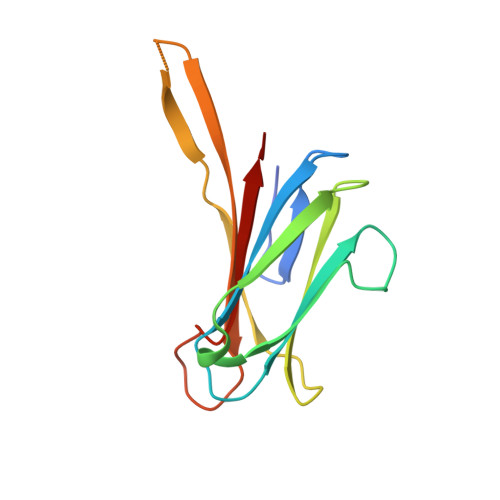Structural Basis of the Affinity for Oligomannosides and Analogs Displayed by Bc2L-A, a Burkholderia Cenocepacia Soluble Lectin.
Lameignere, E., Shiao, T.C., Roy, R., Wimmerova, M., Dubreuil, F., Varrot, A., Imberty, A.(2010) Glycobiology 20: 87
- PubMed: 19770128
- DOI: https://doi.org/10.1093/glycob/cwp151
- Primary Citation of Related Structures:
2WR9, 2WRA - PubMed Abstract:
The opportunistic pathogen Burkholderia cenocepacia contains three soluble carbohydrate-binding proteins, related to the fucose-binding lectin PA-IIL from Pseudomonas aeruginosa. All contain a PA-IIL-like domain and two of them have an additional N-terminal domain that displays no sequence similarities with known proteins. Printed arrays screening performed on the shortest one, B. cenocepacia lectin A (BC2L-A), demonstrated the strict specificity for oligomannose-type N-glycan structures (Lameignere E, Malinovská L, Sláviková M, Duchaud E, Mitchell EP, Varrot A, Sedo O, Imberty A, Wimmerová M. 2008. Structural basis for mannose recognition by a lectin from opportunistic bacteria Burkholderia cenocepacia. Biochem J. 411:307-318.). The disaccharides alphaMan1-2Man, alphaMan1-3Man, and alphaMan1-6Man and the trisaccharide alphaMan1-3(alphaMan1-6)Man were tested by titration microcalorimetry in order to evaluate their affinity for BC2L-A in solution and to characterize the thermodynamics of the binding. Oligomannose analogs presenting two mannoside residues separated by either flexible or rigid spacer were also tested. Only the rigid one yields to high affinity binding with a fast kinetics of clustering, while the flexible analog and the trimannoside display moderate affinities and no clustering effect on short time scale. The crystal structures of BC2L-A have been obtained in complex with alphaMan1-3Man disaccharide and alphaMan1(alphaMan1-6)-3Man trisaccharide. The lengthy time required for the co-crystallization with the trisaccharide allowed for the formation of cluster since in the BC2L-A-trimannose complex solved at 1.1 A resolution, the sugar creates a bridge between two adjacent dimers, yielding to molecular strings. AFM experiments were performed in order to visualize the filaments formed in solution by this type of interaction.
Organizational Affiliation:
CERMAV-CNRS (affiliated with Université Joseph Fourier and belonging to ICMG), BP 53, F-38041, Grenoble, Cedex 09, France.

















